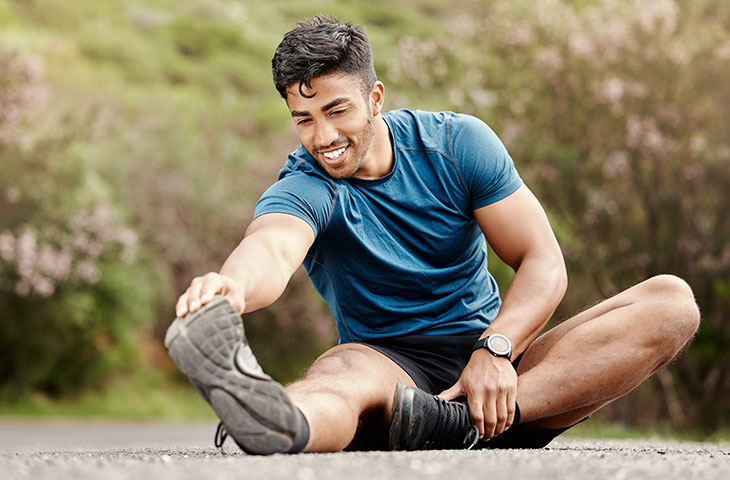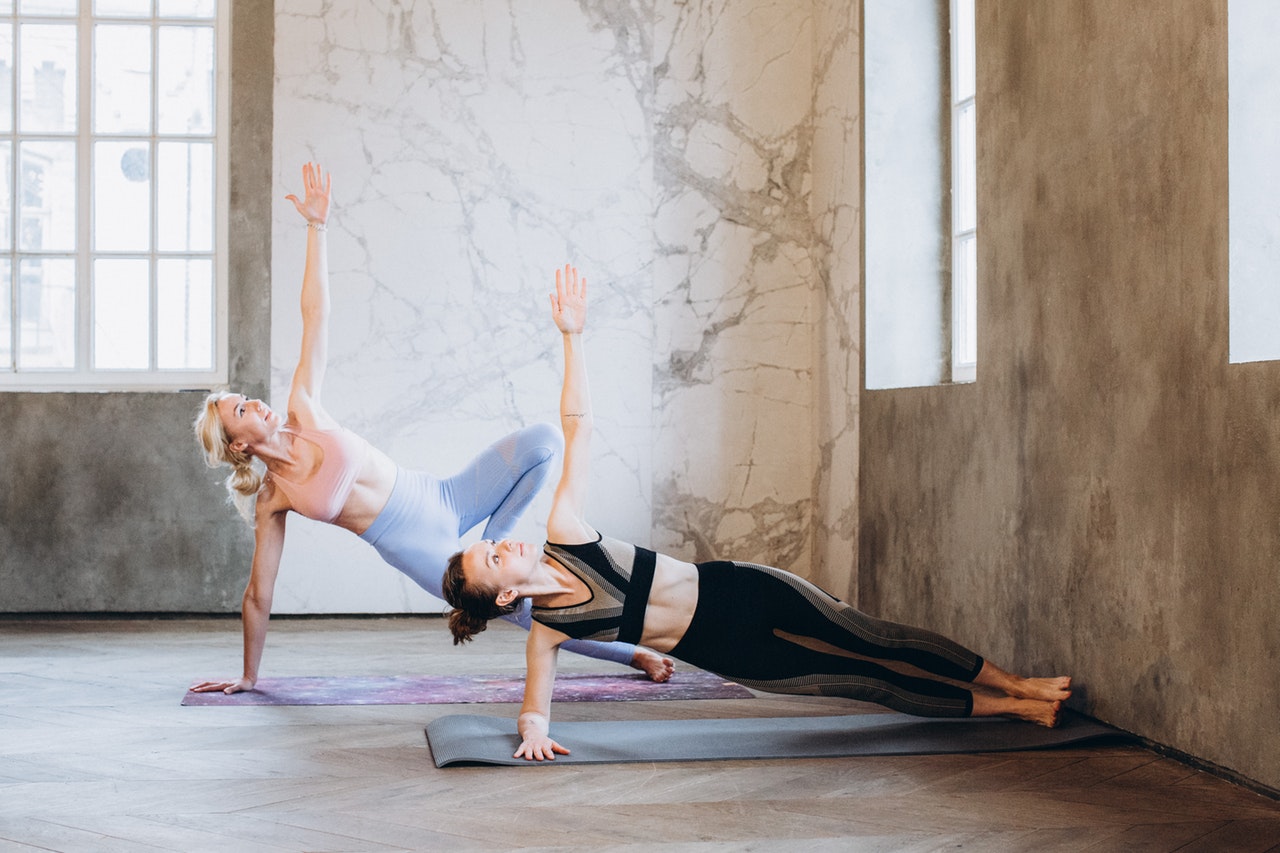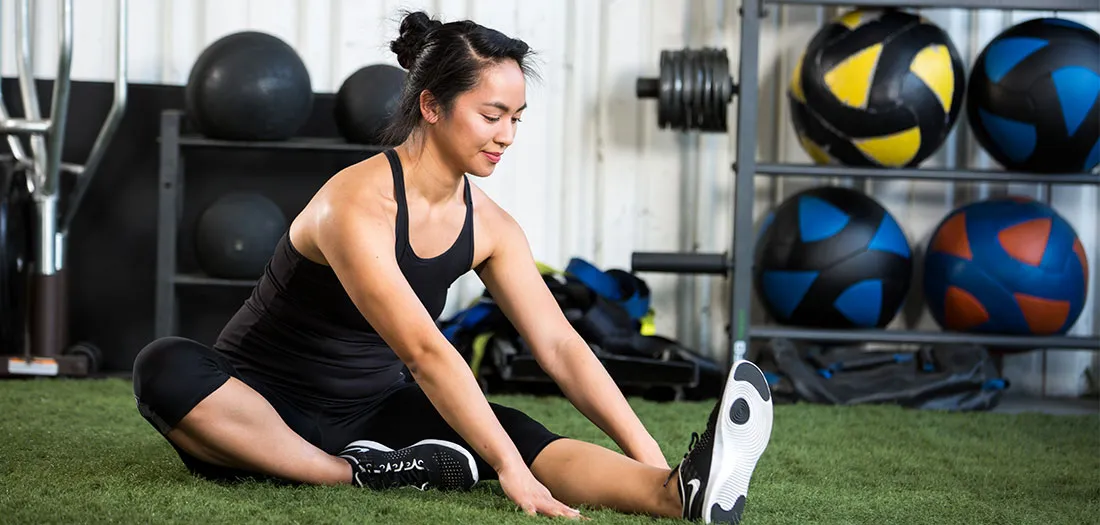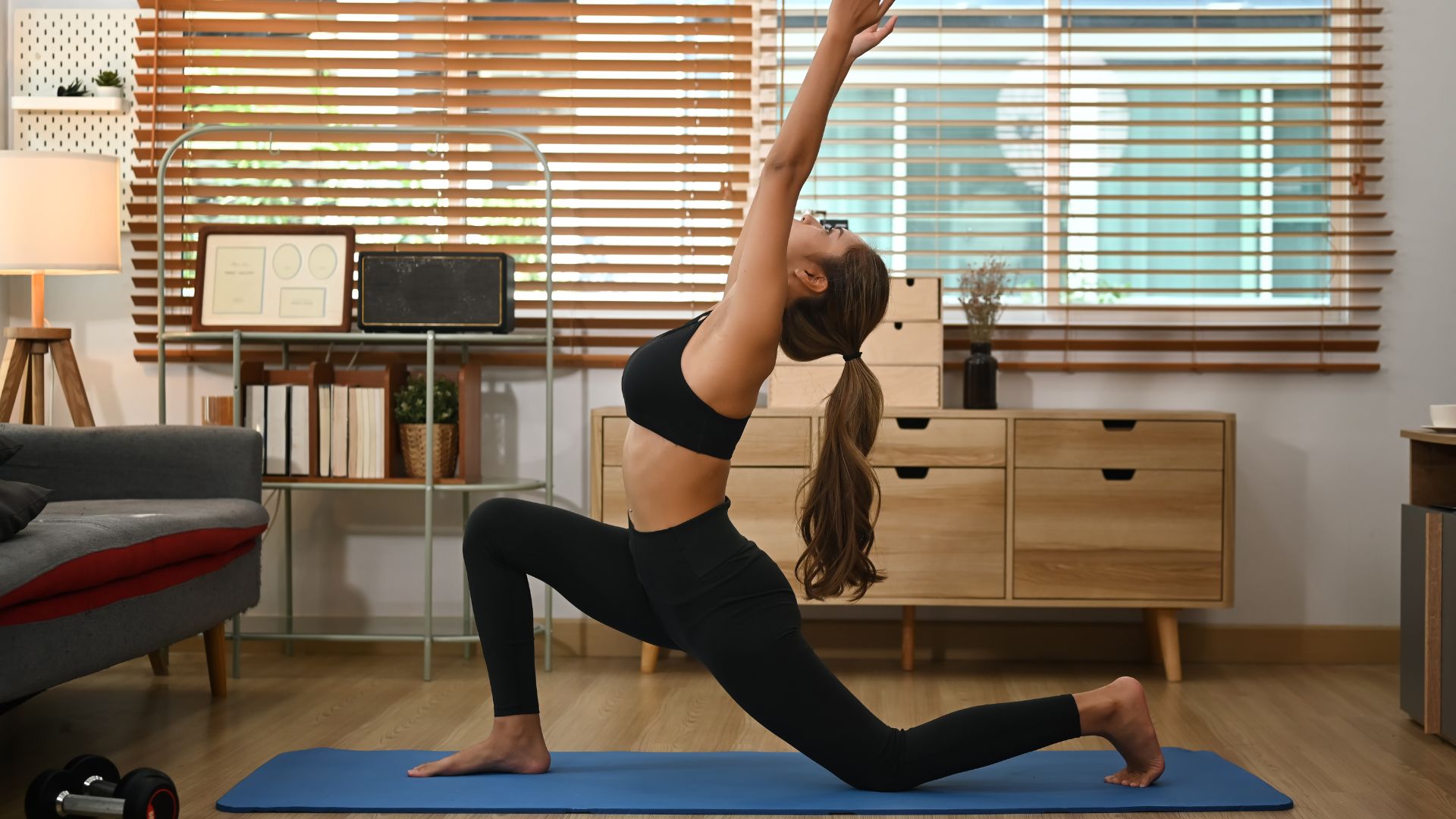Hey there, picture this: It’s a crisp morning in my mid-30s, and I’m fumbling through my closet for running shoes that haven’t seen daylight since last winter. My back’s acting up from too many hours hunched over a laptop, and my legs feel like they’ve forgotten how to bend without protest. That’s when I decided enough was enough—I dove headfirst into stretching. Not the half-hearted toe touches I’d slap together before a jog, but a real routine that turned me from a creaky tin man into someone who could touch his toes without a comedy of errors. If you’re nodding along, feeling that familiar tightness in your hips or shoulders, stick with me. This isn’t just another fitness lecture; it’s the roadmap that changed my mornings from groan-fests to “hey, I might actually enjoy moving today.”
Stretching isn’t some mystical yoga guru secret—it’s the unsung hero of everyday movement. Whether you’re chasing kids around the park, grinding through desk-job days, or prepping for that weekend hike, building flexibility keeps you limber and ready. Over the next few minutes, we’ll unpack why it matters, how to do it without pulling a muscle (or your hair out), and tips to make it stick. Trust me, by the end, you’ll be eyeing your yoga mat like an old friend.
What Is Stretching and Why Does Flexibility Matter?
Stretching is basically your body’s way of saying, “Hey, let’s loosen up these knots before they turn into a full-blown rebellion.” It’s the deliberate lengthening of muscles and tendons to boost your range of motion—that full swing of your arms or deep squat without your knees creaking like an old door. Flexibility, on the flip side, is the reward: the ability to move freely without stiffness hijacking your day. Think of it as oiling the hinges on a rusty gate; suddenly, everything swings smoother.
I remember my first real “aha” moment with this. Back in college, I was that guy who skipped warm-ups during pickup basketball games, only to hobble home with a tweaked hamstring. Fast-forward a decade, and consistent stretching turned those games into something I actually looked forward to—no more ice packs and regret. Research backs this up too; studies show regular stretching can counteract the natural 10% flexibility drop per decade after 20. It’s not just about avoiding pain—it’s reclaiming the ease of bending down to tie your shoes or reaching for that top shelf without a step stool saga.
In a world glued to screens and seats, flexibility fights back against the sedentary creep. It supports posture, balance, and even mental clarity, turning “ouch” into “oh yeah.” If you’ve ever woken up feeling like a board, this is your wake-up call—literally.
The Real Benefits of Stretching: More Than Just Touching Your Toes
Diving into stretching unlocked a cascade of perks I never saw coming. Sure, the obvious win is that increased range of motion, letting you swing a golf club fuller or chase a toddler without gasping. But the magic? It’s in the ripple effects. Better circulation means nutrients zip to your muscles faster, easing soreness after a tough day. And let’s not gloss over the injury shield—tight muscles are strain magnets, but flexible ones? They’re your body’s bouncers, keeping pulls and tweaks at bay.
One benefit that snuck up on me was the posture boost. Years of slouching over code left my shoulders rounded like a question mark, but weekly stretches straightened me out—literally. Now, I stand taller, breathe easier, and even catch compliments on my “confident vibe.” Science chimes in here: improved flexibility enhances balance and coordination, cutting fall risks as we age. Plus, that post-stretch glow? It’s real—endorphins kick in, melting stress like butter on toast.
Don’t sleep on the performance edge either. Athletes swear by it for explosive power, but even casual walkers notice quicker recovery and less fatigue. In short, stretching isn’t a chore; it’s an investment in a body that moves with you, not against you.
Physical Health Wins
Your joints thank you first. Stretching lubricates them, warding off arthritis aches and keeping that daily grind pain-free. For me, it meant ditching the morning ibuprofen ritual after hikes—hamstrings that used to scream now hum along happily.
Blood flow ramps up too, flushing out lactic acid buildup for faster bounce-back after workouts. Imagine finishing a run without the next-day waddle; that’s the promise.
Mental and Emotional Perks
Here’s where it gets fun—stretching doubles as a mini-meditation. That deep breath in a forward fold? It quiets the mind chatter, lowering cortisol and easing anxiety. I pair mine with podcasts now; it’s my daily reset button.
Emotionally, it’s empowering. Conquering a tough hip opener feels like slaying a dragon—small wins that build resilience off the mat too.
Common Stretching Techniques: From Static to Dynamic
Techniques vary like coffee orders—pick what suits your vibe, but know the basics to avoid flops. Static stretching is the classic hold-and-breathe, perfect for unwinding after a sweat session. Dynamic? That’s your lively warm-up dance, swinging limbs to mimic the moves ahead. And don’t knock proprioceptive neuromuscular facilitation (PNF)—it’s the advanced combo of contract-and-release for serious gains.
I started with static because it’s forgiving—no bouncing required, just patience. But adding dynamic swings before runs? Game-changer. They prep your body without the post-stretch slump some folks dread.
Each has its sweet spot: static for depth, dynamic for activation. Mix ’em based on your goals, and you’ll feel the difference in weeks.
Static Stretching Basics
Hold that pose steady, like a statue with good intentions. Aim for 30 seconds per side, feeling the gentle pull without pain—think “ahh,” not “ow.”
It’s gold for cooldowns, lengthening muscles post-pump. My go-to: seated forward fold for hamstrings, easing desk-job tension like a charm.
Dynamic Stretching for Warm-Ups
Swing those arms, circle the hips—motion is the mantra. No holds here; flow through 10-15 reps to rev the engine.
Runners love leg kicks for stride prep. I do arm circles before desk stretches; wakes me up better than coffee.
PNF: The Power Couple
Contract the muscle hard for 5-10 seconds, then sink deeper into the stretch. Partner optional, but solo works with a wall.
It’s intense but effective for stubborn spots. My shoulder routine? Night-and-day relief after months of trial.
Pros and Cons of Popular Stretching Methods
| Technique | Pros | Cons |
|---|---|---|
| Static | Deep relaxation; easy to learn; great for recovery | Can reduce power if done pre-workout; risk of overstretch if rushed |
| Dynamic | Boosts heart rate; sport-specific prep; fun and quick | Requires coordination; not ideal for cooling down |
| PNF | Fast flexibility gains; targets tight areas precisely | Needs focus or a buddy; can feel intimidating for newbies |
This table’s my cheat sheet—static for evenings, dynamic for mornings. Weigh ’em against your routine; no one-size-fits-all here.
Building Your Stretching Routine: Step-by-Step Guide
Crafting a routine is like plotting a road trip: start simple, build detours as you go. Beginners, aim for 10-15 minutes daily—full body, no skips. Warm up with a brisk walk first; cold stretches are a recipe for regret. Focus on majors: legs, back, shoulders. Track progress in a journal—nothing motivates like seeing “toe-touch achieved” in ink.
My routine evolved from chaotic to clockwork. Mornings: dynamic flows. Evenings: static unwinds. Consistency trumps perfection; even five minutes beats zero.
Beginner Full-Body Sequence
- Neck Rolls: Gentle circles, 5 each way. Loosens that screen-neck crunch.
- Standing Quad Pull: Grab ankle behind, hold 20 seconds per leg. Wakes sleepy thighs.
- Cat-Cow Flow: On all fours, arch and round spine 10 times. Back bliss in seconds.
Do this thrice weekly; add time as it feels natural. I snuck it into lunch breaks—voilà, no more afternoon slump.
Intermediate Twists for Progress
Layer in holds: Forward fold with knee bends for hamstrings. Pigeon pose for hips—my nemesis turned ally.
Frequency: 4-5 days. Pair with breathwork; turns “meh” into meditative.
Best Tools and Accessories for Stretching Success
Gear up without overkill—your body does the heavy lifting. A yoga strap? Lifesaver for hamstring newbies, looping around feet for deeper reaches without strain. Foam rollers? My secret weapon for self-massage, kneading knots like dough.
Where to snag ’em? Amazon’s basics section for straps under $10, or hit a local sports store for hands-on feels. Resistance bands add oomph to PNF—affordable and portable.
Pro tip: Start strap-free to build awareness, then accessorize. I grabbed mine post-injury; wish I’d sooner.
- Yoga Blocks: Prop for tight hips; stackable support.
- Mat: Non-slip grip prevents wipeouts—essential for flows.
- Wheel: Back opener extraordinaire; gentle arch heaven.
These aren’t must-haves, but they amp results. Budget? Under $50 total.
Myths vs. Facts: Clearing the Air on Stretching
Ah, myths—the stretching world’s tall tales. “Stretch before every run to bulletproof against injury”? Nope, dynamic warm-ups win that round; static can sap power short-term. Fact: It shines post-workout for recovery, not pre-game heroics.
Another whopper: “Hold for 60 seconds or bust.” Truth? 30 seconds packs punch; consistency over marathon holds. I chased longer holds once, only to burn out. Short and sweet? Sustainable gold.
“Stretching slims you down”? Cute, but nah—it’s mobility magic, not calorie torcher. Laugh off the fluff; embrace the real.
Busting Injury Prevention Hype
Myth: Stretching stops all strains. Fact: It lowers risk but doesn’t erase it—pair with strength work. My pulled calf? Ignored warm-ups, not stretches.
The Hold Time Truth
No magic number, but 10-30 seconds repeated builds tolerance. Overdo it? Diminishing returns and boredom.
Tips for Safe and Effective Stretching
Safety first, always—listen to your body like it’s spilling secrets. Breathe deep; shallow pants tighten you up. No bouncing; that’s ballistic territory for pros only. Warm muscles stretch best, so jog in place pre-session.
Humor alert: I once “bounced” a hamstring stretch—ended up hopping like a cartoon frog. Lesson learned: smooth sails over jerky fails.
Progress slowly; force it, and you’ll sideline yourself. Hydrate too—dehydrated tissues? Cranky rebels.
- Track tweaks: Journal pains to tweak routines.
- Partner up: Accountability doubles fun (and form checks).
- Rest days: Flexibility loves recovery; don’t grind daily.
Incorporate mindfully—bedside stretches for wind-downs, desk ones for mid-day resets. Make it yours.
People Also Ask: Your Burning Questions Answered
Ever Googled mid-stretch and spiraled into “wait, what?” territory? Google’s People Also Ask section is a goldmine for those head-scratchers. Pulled from real searches, here’s the scoop on top queries.
How often should you stretch to improve flexibility?
Aim for 2-3 times weekly, 10-30 minutes per session. Daily mini-sessions work too—consistency trumps marathon marathons. My rule: Even on lazy days, five minutes beats zilch.
Does stretching actually prevent injuries?
It cuts risks by keeping muscles pliable, but it’s no force field. Combine with warm-ups and strength for the full shield. Post-game stretches saved my runs more than pre ones ever did.
What’s the difference between static and dynamic stretching?
Static: Hold and chill, ideal post-workout. Dynamic: Move it or lose it, perfect pre-sweat. I swap ’em like outfits—dynamic for energy, static for zen.
Can stretching make you taller?
Ha, wishful thinking—no bone-lengthening here. But better posture? Absolutely, adds inches visually. I “grew” an inch just by un-hunching.
Is it better to stretch before or after a workout?
After for depth, before with dynamics for prep. Skip cold statics; they’re sneaky injury inviters.
FAQ: Real Talk on Stretching Hurdles
Drawing from chats with friends and forum dives, these are the sticky spots folks hit. Short, sweet answers—no fluff.
Q: I can’t touch my toes—am I doomed?
A: Nope! Start knees-bent, build from there. Took me three months; now it’s casual. Patience is your superpower.
Q: Stretching hurts—should I push through?
A: Never. Mild pull yes, sharp no—back off and reassess. Pain’s your body’s “abort mission” signal.
Q: How long until I see flexibility gains?
A: 4-6 weeks with steady effort. Track weekly; small wins snowball.
Q: Can I stretch if I’m injured?
A: Gently, yes—but chat with a doc first. Modified moves kept me moving through a knee tweak.
Q: What’s the best time of day for stretching?
A: Whenever fits—mornings loosen sleep stiffness, evenings melt stress. I vote evenings; pairs with wine (kidding… mostly).
There you have it—your all-access pass to a more bendy, breezy you. Remember that morning creak from years back? Now, I roll out of bed and flow into child’s pose like it’s no big deal. Stretching isn’t about perfection; it’s about showing up for your body, one breath at a time. Grab that strap, unroll the mat, and let’s loosen up life together. What’s your first stretch gonna be?




